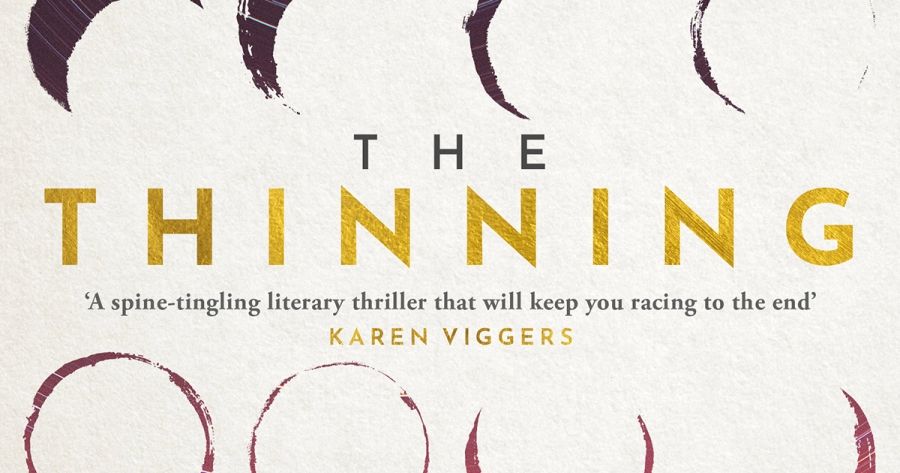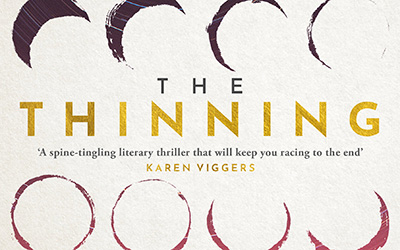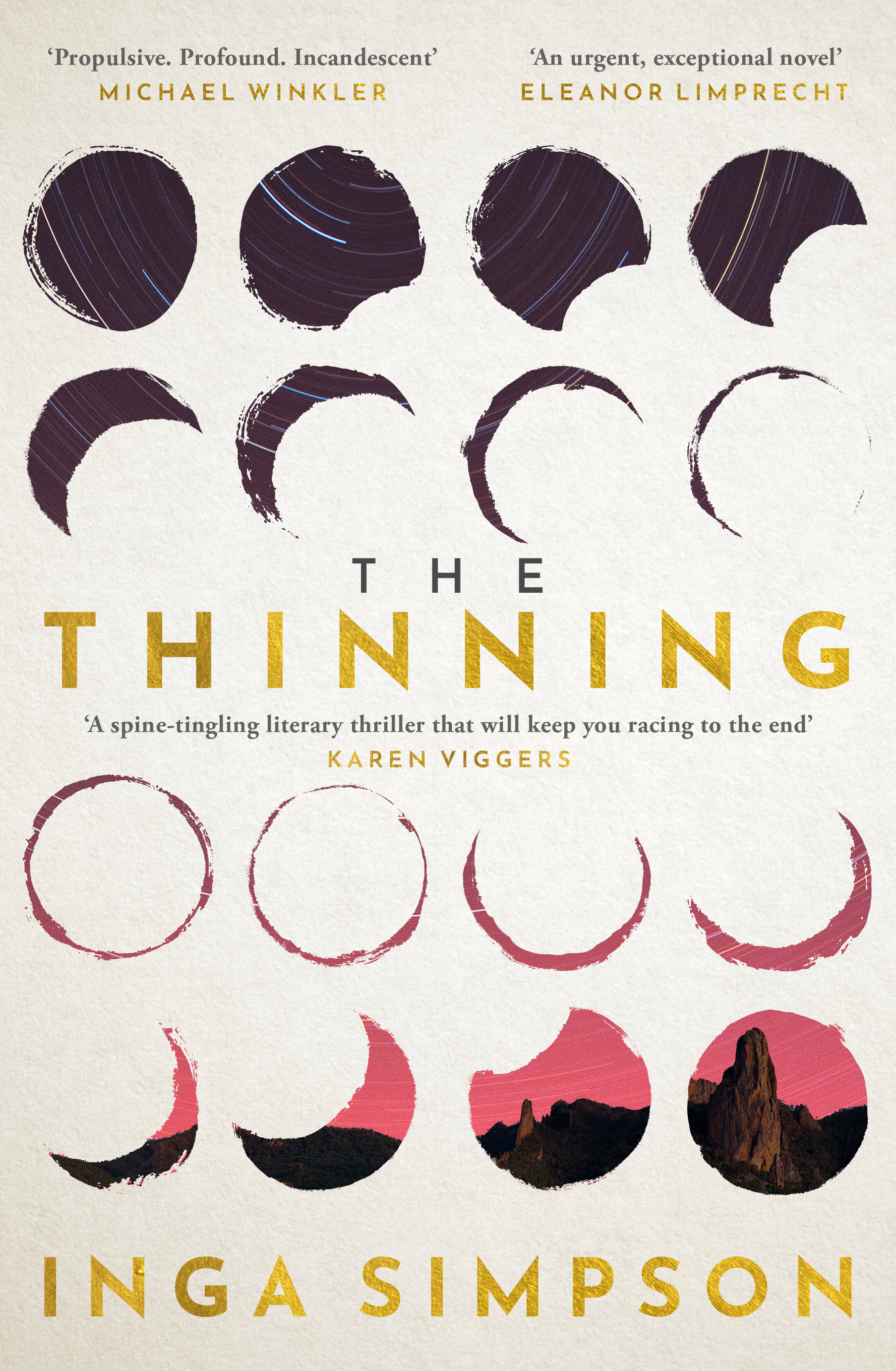
- Free Article: No
- Contents Category: Fiction
- Review Article: Yes
- Article Title: Partial eclipse
- Article Subtitle: Novel roiled by plot
- Online Only: No
- Custom Highlight Text:
Inga Simpson’s The Thinning owes a literary debt to the American nature writer Annie Dillard’s evergreen essay ‘Total Eclipse’ (1982). An account of the solar eclipse that Dillard observed on 26 February 1979, ‘Total Eclipse’ aims not merely to narrate experience but also to impart the shock of estrangement. It is an essay in awe, shot through with verbal echoes. In the moon’s long shadow, Dillard glimpsed an otherworld in which the hillside’s ‘hues were metallic; their finish was matte’, in which the living appeared as if preserved within ‘a tinted photograph from which the tints had faded’. When perfectly aligned, the moon and sun come to resemble a ‘thin ring, an old, thin silver wedding band, an old, worn ring’: a partial eclipse’s relation to a total eclipse is the relation of ‘kissing a man’ to ‘marrying him’. What Dillard knew well, and what her sentences know best of all, is that there is a patness to causal narrative that impedes the expression of a genuine revelation. No amount of careful set-up can quite account for the new.
- Featured Image (400px * 250px):

- Alt Tag (Featured Image): Joseph Steinberg reviews ‘The Thinning’ by Inga Simpson
- Book 1 Title: The Thinning
- Book 1 Biblio: Hachette, $32.99 pb, 279 pp
- Book 1 Cover Small (400 x 600):

- Book 1 Cover (800 x 1200):

- Book 1 Readings Link: https://www.readings.com.au/product/9780733643514/the-thinning--inga-simpson--2024--9780733643514#rac:jokjjzr6ly9m
But can this work for a thriller? What would it mean to try to plot a series of scrapes and swerves to a denouement that somehow eludes or otherwise transcends all that precedes it? Would this entail a failure of the genre’s trademark suspense? These are questions that shadow The Thinning. It is a tale told by a teenager, Fin Kelvin, much of it arranged into sections titled after the phases of twilight: civil, nautical, amateur, astronomical. Fin’s narrative takes the form of a breakneck road trip from Warrumbungle National Park to Mount Kaputar, to complete a trio of ambiguously important tasks for her mother, Dianella.
This plot’s roiling boil is punctuated by recollections of a childhood warped by climate change and a young adulthood in which Fin was homeschooled off-grid. Fin is joined on her journey by a fourteen-year-old named Terry, whose talents include the ability to echolocate by clicking his fingers and a rudimentary form of empathic telepathy. Among their shadowy enemies is the entity known as MuX, a malignant corporation keen to survey and control scientists, including both Fin’s and Terry’s parents. MuX first tries bribes and when that fails, resorts to threats. All this amounts to a pacey beach read, albeit one that seems at best a light entertainment when compared with Dillard’s ambitious prose stylings.
If Dillard’s sentences are striking, an effort to express the shock to the system that is novel experience, Simpson’s are better described as pleasing. They tamely express a familiar range of feelings and themes, The Thinning’s near-future setting notwithstanding, and they do so in accessible prose. ‘What do you mean?’ asks Terry at one stage, confused by a figure of speech, and sure enough Fin is happy to spell out for him just what a metaphor is: ‘When you compare one thing with another to kind of make a point.’ Simpson runs the risk of losing more attentive readers. Yet it is hard not to feel for Fin, she being the daughter of an astronomer who died of cancer and a living astrophotographer-turned-activist. Her budding queer feelings for her friend Hild, her righteous anger at the extinction of koalas or the death of a coral reef, her respect for Gamilaraay Country, which she describes with heartfelt care – what’s not to like? One memorable scene sees her break into a tampon machine that won’t accept notes; another sees her fend off a pair of hooligans on a quadbike in her ATV. She refers to Terry using a gender-neutral pronoun in the first hundred or so pages, then asks him which he would prefer. There is an earnestness to her behaviour that will no doubt draw young readers to Fin, albeit precious little that lends her bite or an edge.
For all her personal virtues, Fin also has a teenager’s tendency to labour her metaphors. ‘If stars are questions,’ she quips at one stage, ‘the answers tell us about ourselves.’ This is a novel in which the astronomical is emphatically personal. Fin’s happily married parents’ world was ‘large, a cosmos’, but in the wake of her father’s death, she and Dianella ‘are stuck, orbiting each other like binary stars, a dark nebula of loss’. She watches the ‘starlight fade’ from her father as he grows ill; he is her ‘lodestar’. This takes on a subtler guise in the difference between Fin’s vision – the ‘wide-angle view’ of the telescopes her parents use for work, which show them ‘what most other people didn’t know or didn’t want to believe’ – and that of Terry, one of a ‘new generation of humans’ who are ‘born with larger eyes and sharper close vision’, but even this is on the cusp of preciousness.
The Thinning is at its best when Fin’s narration takes on some of the qualities of Terry’s close vision, which allows Simpson to bring to bear the eye for place that was on full display in her memoir, Understory (2017). The novel wavers when it feels too acutely the pressure to voice this local descriptive work through an all too sympathetic narrator. The Thinning leaves one wishing, at times, that its less readily likeable characters would speak. In this sense, the photograph that makes Dianella famous, a ‘stacked picture’ in which satellite tracks mark ‘the stitching across the sky that was sewing it shut’, promises something the novel never quite delivers. Like this image, The Thinning presents a clear warning, but it could hardly be said to ‘push the edges of technique’ in its time. One longs to see Simpson use her talents to realise both the political and experimental strands of her character’s vision.


Comments powered by CComment